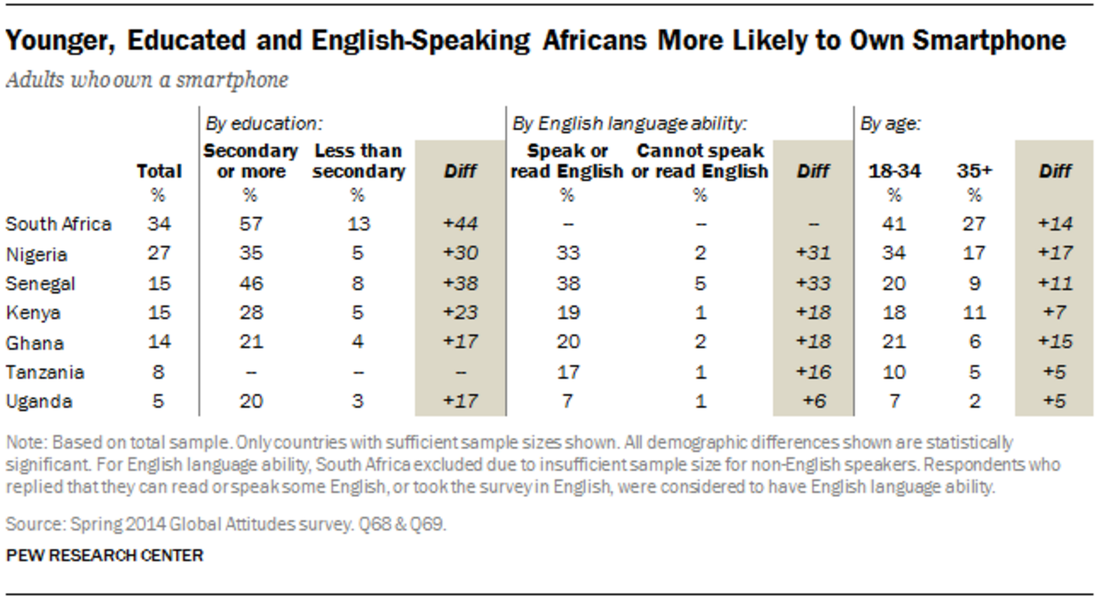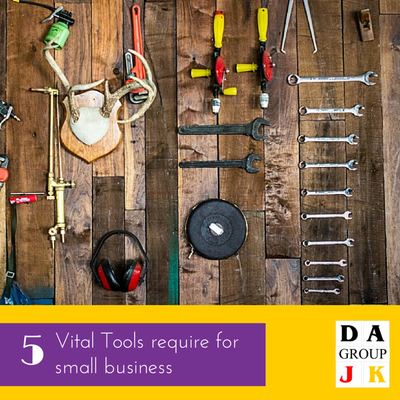Texting Most Common Activity, but Mobile Money Popular in Several Countries In a few short years, the proliferation of mobile phone networks has transformed communications in sub-Saharan Africa. It has also allowed Africans to skip the landline stage of development and jump right to the digital age. Cell phones are pervasive in the region. In 2002, roughly one-in-ten owned a mobile phone in Tanzania, Uganda, Kenya and Ghana. Since then, cell phone ownership has grown exponentially. Today, cell phones are as common in South Africa and Nigeria as they are in the United States. Smartphones (those that can access the internet and applications) are less widely used, though significant minorities own these devices in several nations, including 34% of South Africans. Cell phones have different uses for different people, but sending text messages and taking pictures or video are the most popular activities among mobile owners. In a few nations, such as Kenya, Uganda and Tanzania, mobile banking is also relatively common. Other activities, such as getting political news, accessing a social networking site, getting health and consumer information and looking for a job are done less frequently. These are among the main findings of a Pew Research Center survey in seven sub-Saharan African nations. The survey was conducted April 11 to June 5, 2014, among 7,052 respondents in Ghana, Kenya, Nigeria, Senegal, South Africa, Tanzania and Uganda. All interviews were face-to-face. Comparison figures for the U.S. are from 2014 Pew Research Center surveys. (For more on technology use in Africa and other emerging and developing nations worldwide, see Internet Seen as Positive Influence on Education but Negative on Morality in Emerging and Developing Nations, released March 19, 2015.) Cell Phones Common in Africa Across the seven countries surveyed, roughly two-thirds or more say they own a cell phone. Ownership is especially high in South Africa and Nigeria, where about nine-in-ten have a cell phone. Since 2002, cell phone ownership has exploded in the countries where trends are available. In 2002, only 8% of Ghanaians said they owned a mobile phone, while that figure stands at 83% today, a more than tenfold increase. Similar growth in mobile penetration is seen in all African countries where survey data are available. By comparison, as of December 2014, 89% of American adults owned a cell phone, up from 64% ownership in 2002. Roughly a third of South Africans (34%) and about a quarter of Nigerians (27%) say that their device is a smartphone, i.e. one that can access the internet and apps, such as an iPhone, Blackberry or Android device. Smartphone ownership is less common in the other nations surveyed, and in Tanzania and Uganda it is still in the single digits. By comparison, 64% in the United States owned a smartphone as of December 2014. The highly educated are particularly likely to own cell phones and smartphones. For instance, 93% of Ugandans with a secondary education or greater own a cell phone, compared with 61% of those with less education. And in South Africa, 57% with a secondary education or more own a smartphone versus 13% with less education. Cell phone and smartphone ownership is also more common among Africans with at least some English facility. Three-quarters of Ugandans who speak or read at least some English own a mobile phone, while only about half (48%) of those with no English language skills own one. And one-third of English-speaking Nigerians own a smartphone, compared with 2% of Nigerians who do not have the ability to read or speak at least some English. (For more on the influence of English language ability on technology usage, see Internet Seen as Positive Influence on Education but Negative on Morality in Emerging and Developing Nations, released March 19, 2015.) In terms of age, mobile phones are common among young and old alike. About the same number of 18- to 34-year-olds and those 35 and older own cell phones in all but one of the African countries surveyed (Tanzania). But there are age gaps in every country on smartphone ownership. For instance, in South Africa, 41% of 18- to 34-year-olds own a smartphone, while only 27% of those 35 and older do. Men are more likely than women to own a cell phone in six of the seven countries surveyed. For example, 77% of Ugandan men own a mobile phone, while only 54% of Ugandan women do. While not as dramatic, significant gender gaps on mobile phone ownership appear in all the other African countries surveyed except South Africa, where equal numbers of men and women own cell phones. Men are also more likely to own a smartphone than women in four countries – Nigeria, Ghana, Senegal and Uganda. A median of 17% across the sub-Saharan African countries surveyed do not own a mobile phone. However, this does not necessarily mean they do not have any access to cell phones; they may share one with someone else. In fact, in spring 2013, when Pew Research asked Kenyans who did not own a cell phone whether they shared one with someone else, 58% of those non-cell phone owners said yes. And 21% of Kenyan mobile phone owners said that they shared their phones with others. Nevertheless, women, the less-educated and those who cannot read or speak English are less likely to have their own mobile phone. Texting and Taking Pictures or Video Most Popular Cell Phone Activities Among cell phone owners in Africa, the most popular activity is sending text messages. Overall, a median of 80% of mobile phone owners across the seven sub-Saharan countries surveyed say they do this with their phones. This includes 95% in South Africa and 92% in Tanzania. In all the countries, at least half of cell phone owners say they send text messages with their devices. The second most popular activity is taking pictures or videos. A median of 53% among cell phone owners say they have done this in the past year. Using mobile devices for pictures and videos is most popular in South Africa (60% among cell owners) and Nigeria (57%). Making or receiving payments on cell phones, also referred to as mobile money, is not as common as texting and taking pictures. But in Kenya, 61% of mobile owners use their device to transfer money. And many people in neighboring Uganda (42%) and Tanzania (39%) also participate in this activity on their cell phones. One of the reasons usage is so much higher in these countries is the prominence of mobile money services, such as M-PESA in Kenya and Tanzania and MTN Mobile Money in Uganda. Elsewhere in Africa, mobile banking is less common. With minor exceptions, most of the other cell phone activities tested in Africa are not as widespread. Medians of about two-in-ten or less of mobile owners say they get political news (21%), access social networking sites (19%), get information about health and medicine (17%), look or apply for a job (14%), or get consumer information such as prices and product availability (14%) on their phones. Accessing social networks on a phone is more popular in Nigeria (35%) and South Africa (31%) compared with the other African nations surveyed. Given that browsing social networks is more likely to be done on smartphones, the fact that smartphone penetration is higher in these two countries may drive this difference. Mobile owners in Nigeria also enjoy getting political news and information (28%). Kenyan cell owners also use their phones to access information about politics (28%), access social networks (28%) and look or apply for jobs (26%). Generally, young people, those with a higher education and Africans with the ability to read or speak English are more likely to participate in most of these mobile activities. For example, 65% of mobile owners ages 18 to 34 in Ghana say they use their device to send text messages, while only 34% of those 35 and older do this. Similarly, 62% of young, cell-owning Ghanaians say they take pictures or video with their phones, but only 33% among the older generations do. These demographic differences do not appear for all activities. Similar numbers of young (18-34 years old) and older people (35+) say they use their cell phones for making or receiving payments. Landline Penetration Near Zero While mobile networks in sub-Saharan Africa have spread rapidly, landline penetration in the seven countries surveyed is close to zero. A median of only 2% across these nations say they have a working landline telephone in their house, with a median of 97% saying they do not have one. There is little variation across the countries on landline ownership. Landlines are simply rare on the continent. By contrast, 60% of Americans have a landline telephone in their household. (However, the share of wireless-only households in the U.S. has been growing rapidly over the past decade as landline ownership falls.) Source: Pew Research Center
0 Comments
Leave a Reply. |
AuthorDAJK GROUP is the place where investors, business owners and entrepreneurs can research and find useful information, insight, resources, advice, guidance and inspiration for acquiring funds for their project, acquisition for their net lease commercial real estate, increasing their assets and running their profitable business. Archives
July 2023
Categories |
Services |
Company |
|








































